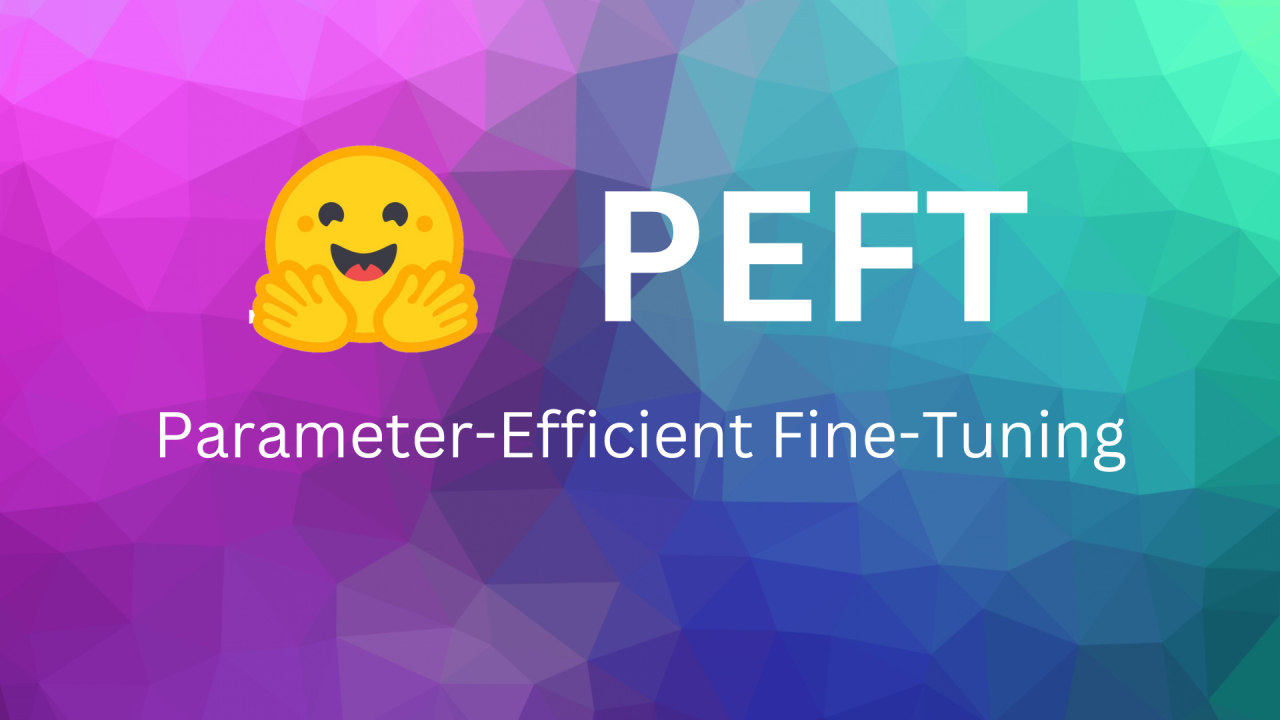
Unlock the Power of Parameter Efficient Fine-Tuning (PEFT) for Large Language Models (LLMs)
Melvin Mathew
Data Science ?? | Machine Learning ?? | Mathematics ? | Generative AI ?? | LangChain ?? | RAG ?? | Chatbot ?? | Deep Learning ?? | NLP ?? | Data Viz ?? | Python ?? | SQL ??? | R ?? | DSA ???
Fine-tuning large language models (LLMs) is a cornerstone of modern natural language processing (NLP), enabling models to adapt to specific tasks with impressive accuracy. However, traditional fine-tuning methods can be prohibitively resource-intensive, requiring significant computational power and memory. Enter Parameter Efficient Fine-Tuning (PEFT), a transformative approach designed to optimize this process, making it more accessible and efficient.
What is Parameter Efficient Fine-Tuning (PEFT)?
Parameter Efficient Fine-Tuning (PEFT) is an innovative technique in machine learning that focuses on updating only a small subset of a model's parameters during the fine-tuning process. This method significantly reduces the computational and memory overhead typically associated with full model fine-tuning, without compromising performance. PEFT leverages methods like Low-Rank Adaptation (LoRA) and prompt tuning to achieve these goals.
Challenges of Full Fine-Tuning
Fine-tuning large language models involves adjusting millions to billions of parameters, which poses several challenges:
1. Memory-Intensive Requirements: Fine-tuning demands substantial memory to store model weights, optimizer states, gradients, and activations. As models grow in size, the memory requirements can become prohibitive, especially for those without access to high-end hardware.
2. Catastrophic Forgetting: When fine-tuning on a new task, there is a risk of the model losing its previously acquired knowledge, leading to degraded performance on earlier tasks.
3. High Storage and Computational Costs: Each task-specific fine-tuning iteration produces a model as large as the original, increasing storage and computational expenses.
Benefits of PEFT
PEFT addresses these challenges through several key advantages:
1. Efficient Memory Utilization: By updating only a fraction of the model parameters, PEFT significantly reduces memory requirements, making it feasible to fine-tune large models on hardware with limited resources.
2. Mitigated Catastrophic Forgetting: PEFT preserves previously learned knowledge by focusing updates on specific parameters, ensuring that the model retains its performance across multiple tasks.
3. Lower Computational Costs: The reduction in trainable parameters leads to decreased computational demands, making PEFT a cost-effective solution for organizations with budget constraints.
4. Flexibility and Versatility: PEFT encompasses various techniques, each offering different trade-offs in terms of parameter efficiency, memory usage, training speed, and model quality. This flexibility allows developers to choose the method that best suits their specific needs.
领英推荐
Prominent PEFT Techniques
1. Low-Rank Adaptation (LoRA)
LoRA is a powerful PEFT technique that introduces low-rank decomposition matrices to the model. These matrices have significantly fewer parameters than the original model weights but are designed to capture essential task-specific information. By updating these smaller matrices instead of the entire model, LoRA achieves substantial memory savings and maintains competitive performance.
- Selective Application: LoRA is often applied to the self-attention layers of the model, where a significant portion of the parameters reside. This selective application maximizes the reduction in trainable parameters without compromising performance.
- Efficient Inference: LoRA's low-rank matrices ensure that inference remains computationally efficient, with minimal impact on processing speed.
2. Prompt Tuning
Prompt tuning involves adding trainable soft prompts to the input text, guiding the model's output effectively without extensive parameter updates. This method allows for quick adaptation to new tasks with minimal computational overhead.
Why PEFT is a Game-Changer
PEFT democratizes access to advanced NLP capabilities, enabling more organizations and researchers to leverage large language models for a wide range of applications. By adopting PEFT, you can achieve high performance, retain model versatility, and significantly reduce the computational burden associated with traditional fine-tuning.
Getting Started with PEFT
To implement PEFT, you can explore frameworks and libraries that support these techniques, such as the Hugging Face Transformers library. Experiment with different methods to find the optimal balance between performance and resource requirements for your specific use case.
Conclusion
Parameter Efficient Fine-Tuning (PEFT) represents a paradigm shift in how we adapt large language models to specific tasks. By updating only a small subset of model parameters, PEFT offers a more efficient and accessible approach to fine-tuning, paving the way for broader use and application of advanced NLP technologies.
?? Keywords: Parameter Efficient Fine-Tuning, PEFT, Low-Rank Adaptation, LoRA, prompt tuning, large language models, LLMs, NLP, machine learning, AI, computational efficiency, memory optimization